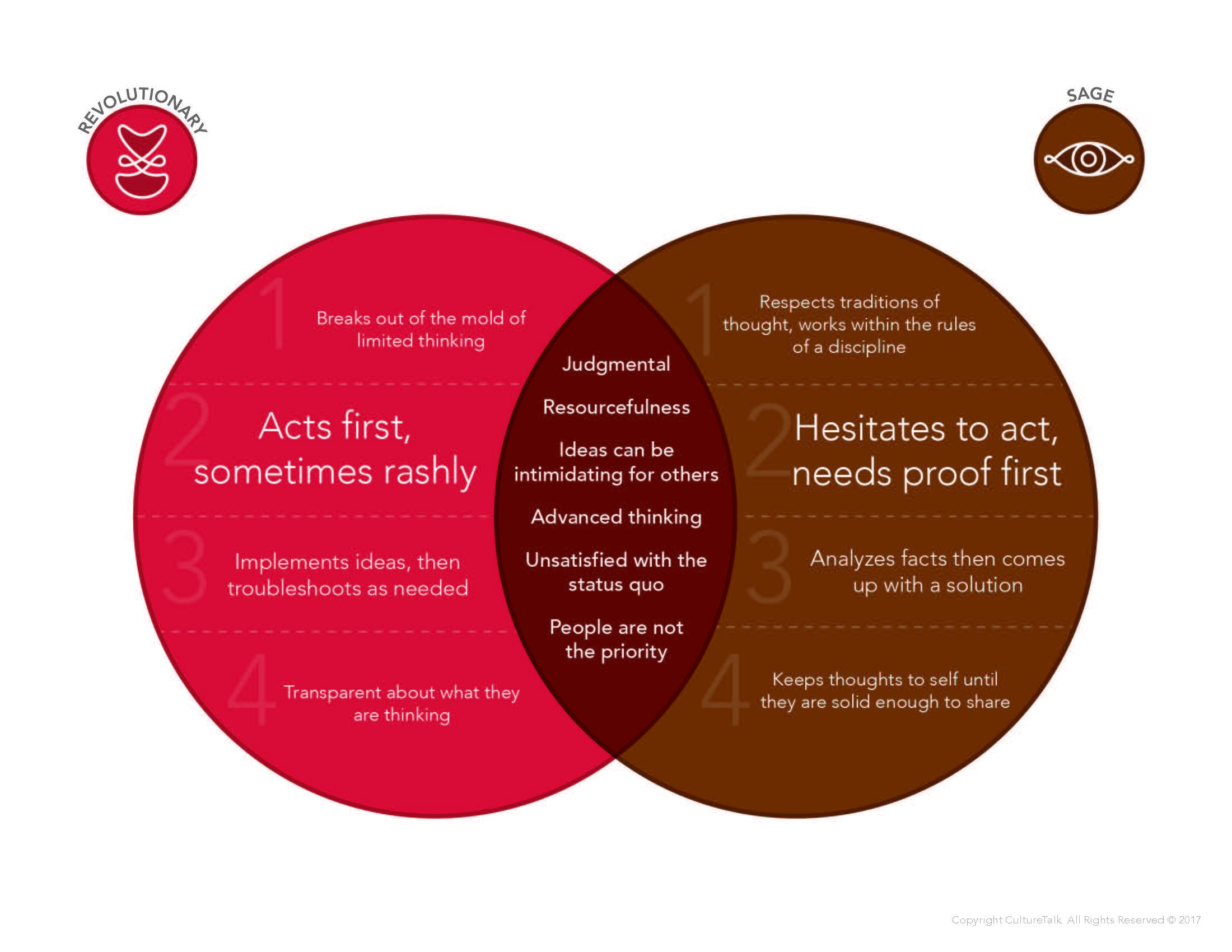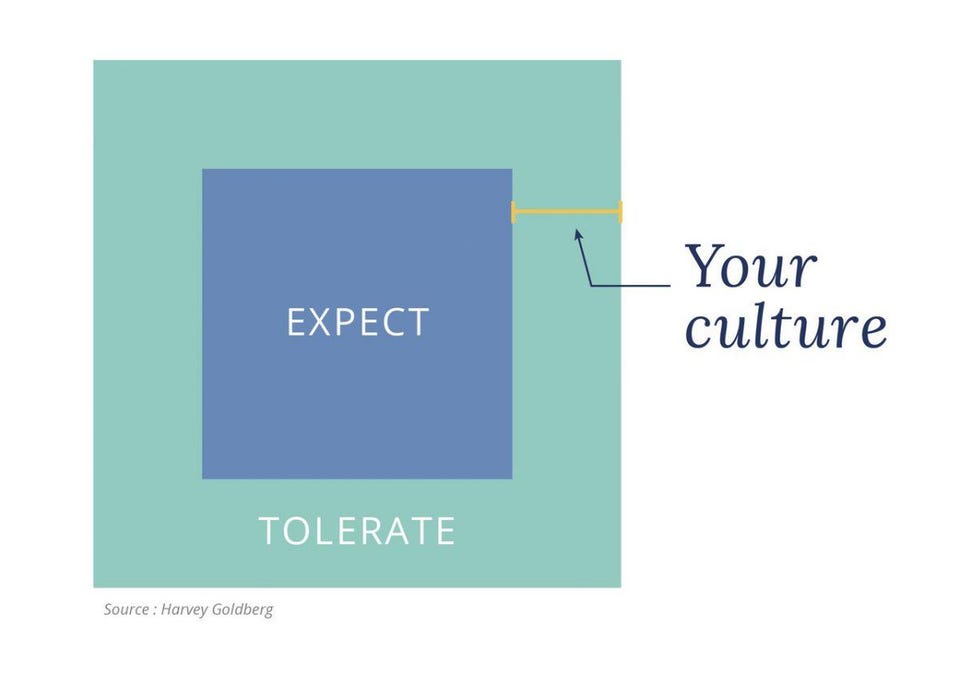For me there were fireworks!
I had an immediate connection to these “story patterns” and how I could incorporate them into my work with clients. And over the next 15 years, we grew a brand agency that became a proving ground for Archetypes.
We began every engagement by measuring the cultural Archetypes that existed in the organization and letting the brand story emerge from the culture. It was a powerful process that ‘unlocked the code’ of a company’s DNA, its heart and soul, and translated it into a story that leaders could build momentum around.
We got to see first-hand the way the story moves people, the way it ignites teams.
And we came to see that the framework of Archetypes – which is grounded in storytelling – could make culture ‘tangible’ and drive measurable business results.
What is it about story?
Many of the teachers we met through the Inner MBA talked about the importance of sharing our individual and collective stories as a starting place of self-awareness, positive relationship, and organizational change.
Chapter 1 of Scott Shute’s The Full Body Yes is ‘Know Your Own Story.’
Tiffany Jana said diversity and inclusion work needs to start with our own stories, “Everything that it has taken for you to arrive at this point in your life represents a really unique and personal journey, a story that is unlike anyone else’s.”
Steve Macadam invested in learning the stories of his employees, giving his time to let each person be heard and be seen.
Storytelling is as human as it gets.
In his ground-breaking work, Sapiens, A Brief History of Humankind, the historian-philosopher Yuval Noah Harari connects story to the survival of our species.
He argues that “any large-scale human cooperation – whether a modern state, a medieval church, an ancient city or an archaic tribe – is rooted in common myths that exist only in people’s collective imagination.”
“Story has enabled us not merely to imagine things, but to do so collectively.”
| Yuval Noah Harari, Sapiens
Story also has a biological basis.
Our brains are wired for story. When we see or hear a story, the neurons in our brain fire in the same patterns as the speaker’s, a process known as neural coupling or mirroring.
And more recent discoveries show that our hearts get involved too! An astonishing scientific study published last September found that “Narrative stimuli can synchronize fluctuations of heart rates between individuals.”
Said another way: Our hearts start beating in unison when they’re captivated by the same story!
Yes, amazing things happen when human beings share stories. We begin to ‘think in sync’ and ‘feel in sync’. We survive . . . and we thrive.
A New Chapter: Human-Centric Cultures
Human thriving is a theme that’s front and center as we face a workplace that has forever been reshaped by a pandemic.
LinkedIn’s 2022 Global Talent Trends Report (The Reinvention of Corporate Culture) christens the 2020s as the ‘era of human-centered workplaces’ calling it a ‘watershed moment for company culture’ where organizations need to recognize that employees are human first.
There is a growing demand for workplaces to be more flexible, more meaningful and more diverse.
Employees are prioritizing their well-being and mental health. They are seeking opportunities to learn and grow. With the Great Reset/Resignation/Reshuffle taking place around us, many are reflecting on how their own stories align with the organizations where they work.
For their part, organizations can’t solve the challenges of the moment on a surface level.
Checking the culture box isn’t enough. Culture has taken center stage and every CEO has taken notice. But creating an organizational culture that attracts talent, drives employee engagement, and informs business strategy is challenging for even the strongest leaders.
As Steven Macadam shared in one of our first Inner MBA sessions:
“Leaders need ways to manage the ongoing challenge of human beings working together. And even more than managing operations successfully – it is cultivating the upside of human potential that helps organizations achieve their strategic objectives.”
The Three Domains of Human Possibility
As Steve set out to transform the culture at Enpro, he called it “his mission in life to crack the code and craft the method” to build an authentic workplace community that unleashed human possibility.


He knew he needed to ‘work across the board’ on the individual level, the communal level and the institutional level. These same three domains became the foundation of our Inner MBA program and it was one of the reasons I was excited to join the inaugural cohort.
Because in the years since meeting Carol Pearson, my team and I continued to expand the use of Archetypes. Through a business called CultureTalk, we now train coaches, consultants and in-house teams how to apply this simple storytelling framework to build awareness and drive change on a personal, interpersonal and organizational level.
The framework offers a ‘how to’ on building an authentic human workplace.
Individual Stories: Who am I?
Early on in our Inner MBA studies, Jeremy Hunter challenged us to see that “90% or more of our actions are on autopilot.”
“Mindfulness and the development of our inner capacities give us the space to question our default positions and to see ourselves constructing our experiences.”
Carl Jung said it this way: “Until you make the unconscious conscious, it will direct your life and you will call it fate.”
He believed awareness of our stories – the Archetypal patterns playing out in our own lives – is a path to expanding consciousness; to living and working with purpose and intention.
Archetypes are human stories – rich and colorful, but also flawed and relatable. When we uncover our personal Archetypes, we have a lens for understanding our motivations, strengths and even our opportunities for growth.
What Lisa Lahey called ‘hidden commitments’ in our Immunity to Change Maps, Jung called ‘the shadow’ – unconscious beliefs and behaviors that may be getting in the way of our growth. (I was able to do this entire exercise by reflecting on the shadows of my own Archetypes!)
At CultureTalk, we offer an assessment for individuals that measures personal values, perceptions and behaviors through Archetypes. Unlike other personality assessments, it doesn’t put people in a box. Rather, results bring to life each person’s multidimensional story. Through authentic reflection individuals create their profile highlighting motivations, strengths, blind spots, and biases.
A personal profile can be activated across the talent lifecycle – to recruit and hire, onboard, engage and retain, build personal purpose and brand, and to develop leaders.
Team Stories: Who are we?
As the Inner MBA moved from Mindful Leaders to Exceptional Teams, I loved this one-liner from Tami Simon, “Our state of being is contagious.”
And from Richard Strozzi: “Conflict generates energy. It’s the energy that allows us to work together.”
Both of these ideas get at the complexity of collaboration and teamwork.
Trust is fundamental to high performing teams. It requires a workplace where psychological safety and conflict resolution are prioritized.
Some of the most important ways team cultures need to evolve – including new ideas about diversity and inclusion, new generations in the workplace, and integrating remote teams – rely on new ways of thinking and working together.


Archetypes help teams build trust quickly. These human stories allow people to show up fully, safely and uniquely. They help team members understand how they interact, where their motivations intersect and how they are wired differently.
Through a common language, teams get to know each other better and faster. They appreciate both the similarities of their storylines and their diversity. They have a shortcut to successful collaborations and productive conflict.
Organizational Stories: How do we all come together?
Jung believed that Archetypes show up as ‘personality’ in individuals and as ‘culture’ in groups. So now I am back to where my own journey with Archetypes began!
Measuring Archetypes gave our clients a way to name, define and operationalize their culture; to turn it into a tangible asset and use it to align strategy, brand and experience.
At CultureTalk we offer an organizational culture assessment that measures shared experiences, underlying beliefs and observed behaviors through Archetypes.


Unlike other culture assessments, results do not pass judgment on a culture as ‘good ‘or ‘bad’ – ‘right’ or ‘wrong.’ Instead, profiles identify which Archetype patterns are predominant, and shine light on the gaps between what we say we ‘expect’ and what we actually ‘tolerate.’
A unique cultural profile helps teams define purpose-driven missions, articulate authentic corporate and talent brands, and execute change and growth initiatives, including M&As.
Authentic Human Workplaces
Our Inner MBA Program moved from ‘me’ to ‘we’ and culminated with the challenge of ‘Making Work a Force for Good.’ It emphasized that we can not change the world for good without first changing ourselves and our organizations.
The framework of Archetypes offers a new opportunity for leaders who are playing the long game. These simple human storylines help us connect and align, lift and shift.
They can become a red thread that ties individuals, teams and organizations together.
__________
About the author
Cynthia Forstmann is a cofounder of CultureTalk, a training and development company that turns ‘culture’ into a business asset through the framework of human story.
Connect with her on LinkedIn or at Cynthia@CultureTalk.com.





